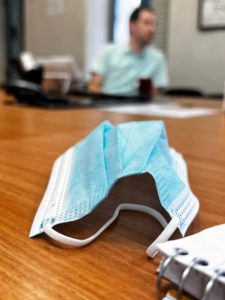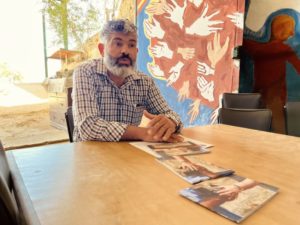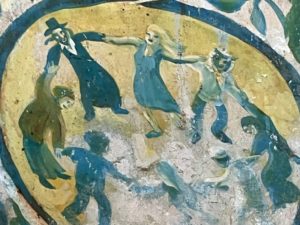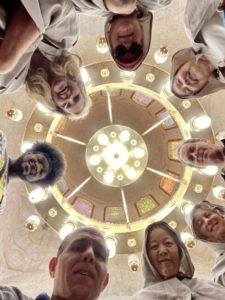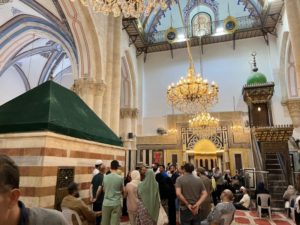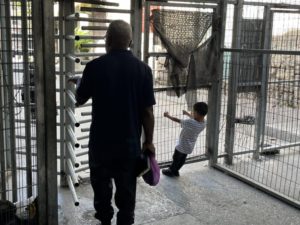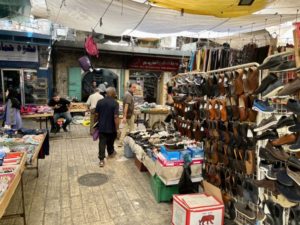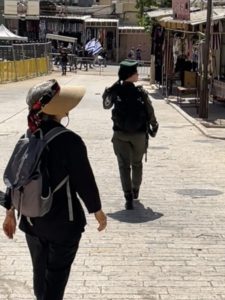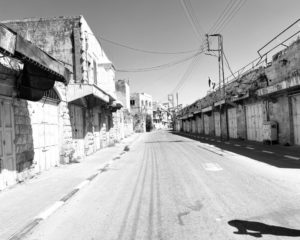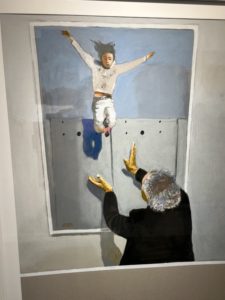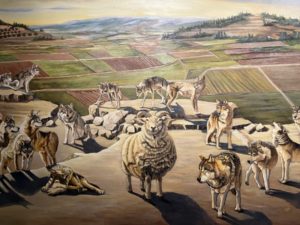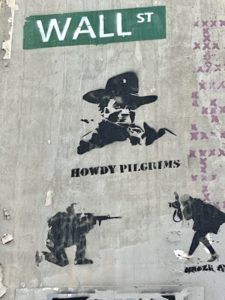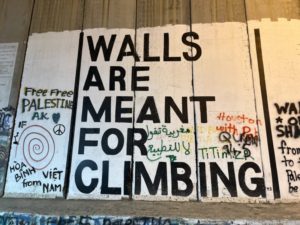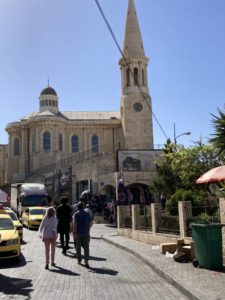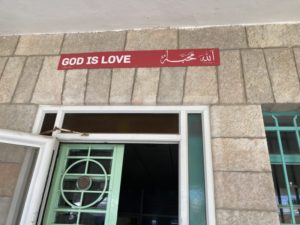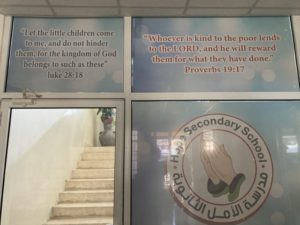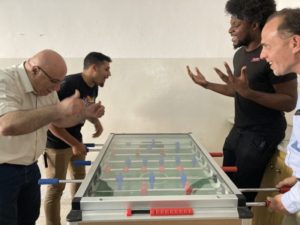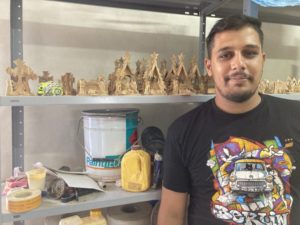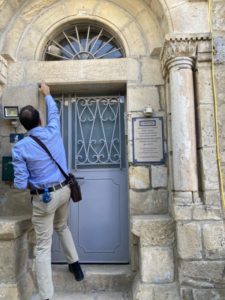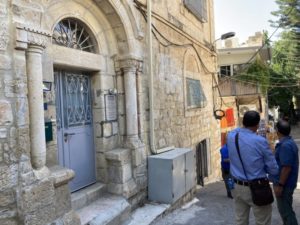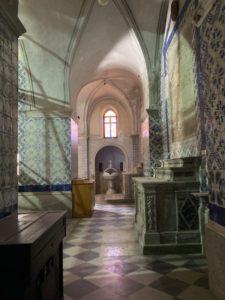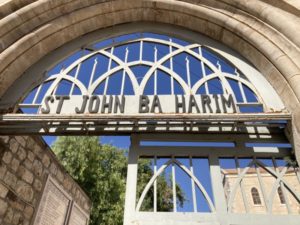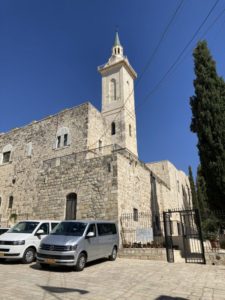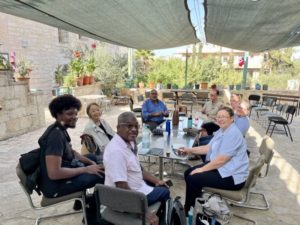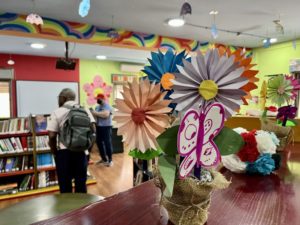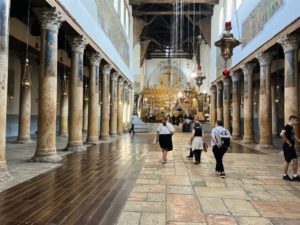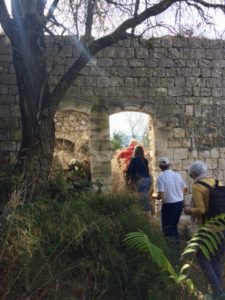Tuesday October 4th
Today was an easier day as we toured Augusta Victoria Hospital (jerusalem.lutheranworld.org)in Jerusalem, OCHA- UN (ochaopt.org)and Taybeh Beer (taybehbeer.com) in the village of Taybeh.
However, on second and third examination, this only brought into clearer focus that we really do not know what we do not know and there is a lot of not knowing. Movement, identity, permissions, ownership, restrictions, and the ever increasing gnarl of crisscrossing roads, separation wall, checkpoints, Palestinian villages and illegal settlements. I could not possibly do all of this justice in a brief blog. So instead let me tell you a story.
Our presenter at OCHA shared slides and reams of data on Gaza and the West Bank and humanitarian concerns in both places. Anyone who knows me at all knows I begin to tune out in about 10 minutes into any stats and numbers presentation. Things only became interesting for me when we started to engage him in questions. I then asked him, given the nature and subject of his work and his identity as an Israeli Jew, if he experienced internal or peer pressures because of the work he does? At first he hesitated and said sometimes he has to think whether he will answer a question like this. Then he said he did not receive threats but last weekend he had a minor medical procedure and a growth removed on his neck and was conscious and listening throughout. The doctors and staff were chatting and a woman shared that her father had founded Ariel, an illegal settlement. Early on there was an alleged murder by Palestinian and as a result a group of the settlers including her father went into Palestinian villages and bashed in car windshields. He said the woman said it with pride and was laughing. He was clearly uncomfortable and then he said the doctor asked him what he did for work. Our presenter concluded that since this man had a knife at his neck, he would be wise not to share his occupation and work place. The photo I took has a mask and the image of our presenter blurred as a background image. My lingering thoughts are that this insidious occupation has many victims and some refuse to BE victims, but many in all walks and ways and choices of life are paying a price. Some are punished for their identity. Others choose to hide it. But at some point each must look in a mirror and ask “who am I?”
Rev. Gail Doering

